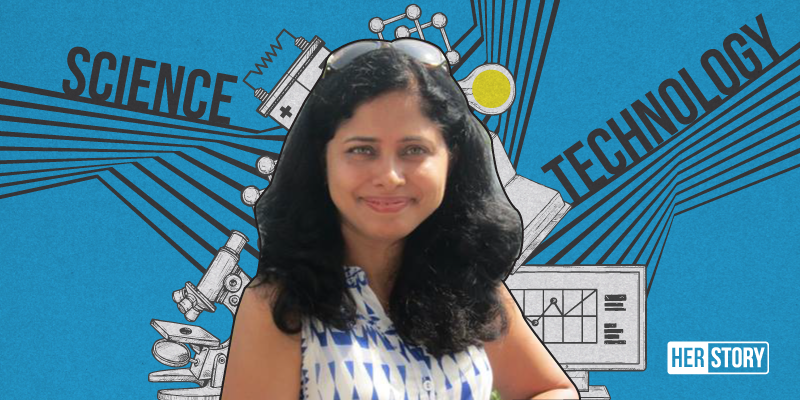At Microsoft India, Sapna Grover is driving AI and Assistance to solve simple human needs
As Head of Program Management in Search, Assistance & Intelligence at Microsoft India, Sapna Grover is passionate about the application of Intelligence and Assistance to help people in a time of information overload.
“Do what you love, and love what you do” has been Sapna Grover’s guiding principle throughout the 23 years of her illustrious career in science and technology.
She believes that in the age of information overload with people struggling to stay on top of things, assistance and intelligence can help regain peace of mind.
As Head of Program Management in Search, Assistance & Intelligence at Microsoft India, she leads the product team responsible for Microsoft Search, Assistance and AI-driven experiences across Outlook, Teams, and many other Office 365 products.
Prior to joining Microsoft, Sapna worked as Senior Director and Head of Product Management at Pegasystems India. She had joined Pega Cambridge office in the US and relocated to India in 2007 to set up the Pega India operations. As a founder, she was instrumental growing the Pega India operation from zero to 1,400+. She played various leadership roles at Pega, from heading large engineering organisation to heading the Product Management and UX designers.

Sapna started her career as a Scientist in Defence Research and Development Organisation (DRDO) and later joined a fast-paced startup in the US before joining Pega. She comes with an excellent academic pedigree – she has done her engineering course from HBTI and her master’s course in IT from Harvard.
In an interview with HerStory, Sapna Grover talks about her career path, her work with Microsoft, and what more can be done to attract women to tech careers.
HerStory: Tell us a bit about your early childhood and education?
Sapna Grover: I come from a simple middle-class family. My dad was in a transferrable government job, which gave us the opportunity to travel across the country, but I spent a majority of my childhood in Kanpur, UP. I grew up in a close-knit traditional joint family. My paternal and maternal uncles were in family businesses where there was little emphasis on career for girls. My father, however, always encouraged us to expand our wings, explore opportunities, and pursue our passions.
I did my basic schooling from a Kendriya Vidyalaya. Always fascinated by the laws of physics, I pursued an engineering degree after schooling. I have always been a sincere and hardworking student and won many accolades in my education years. My most notable award was a gold medal in engineering during my university years. Besides this I was a class marshal at Harvard extension school, where I did my master’s in IT. As they say, you never stop learning, and I was happy to get an opportunity to complete an executive management programme from ISB in collaboration with Kellogg’s a few years back.
HS: You have had an impressive career path so far…
SG: I consider myself very fortunate to have experienced a diverse set of work opportunities and unique learnings with each stint.
Right after college, I joined DRDO as a scientist. Here, I got the opportunity to travel and visit the DRDO labs in Pune, Hyderabad, and Bengaluru but spent significant time at the Solid State Physics Lab (SSPL) in Delhi, where I did research on night vision devices.
After spending four years at DRDO, I wanted to move to a fast-paced environment and joined a startup in the US, where we had moved after marriage. Post this, I joined another American software company and later moved back to India to help set up their India office and establish their product group.
I had my “hit refresh” moment last year and decided to join the ‘AI and Research’ group at Microsoft India with the search for newer challenges, to venture into relatively unknown territory, which would help me to grow my capabilities further. I am enjoying my work and the opportunity to make an impact on society.
HS: As Head of Program Management in Search, Assistance & Intelligence at Microsoft India, what is it that you do?
SG: I lead the product team responsible for Microsoft Search, Assistance and AI-driven experiences across Outlook, Teams and many other Office 365 products. Search Answers is a huge part of what we do. Finding what you need gets harder every day. According to a McKinsey report, employees spend 1.8 hours every day - 9.3 hours per week, on average - searching and gathering information. We are working to apply the latest technology to help you find the right answer, information, or content that you need, sometimes even before you ask!
We have infused AI into different parts of Office 365 products. As an example, consider focused Inbox, which tries to declutter the inbox and helps the user focus on important emails.
HS: You are also passionate about the application of Intelligence and Assistance to solve real human needs. Can you elaborate on this?
SG: I am very passionate about the applicability of technology in the real world. The opportunity is around taking mundane tasks out of the equation and making us more efficient so we can do important things and spend more time with our loved ones.
HS: How would you define information overload?
SG: Today, we are constantly bombarded with information from all around, across emails and social media to several apps. People are hard-pressed for time and there is a fear of missing out (FOMO). There is a social anxiety and pressure to always stay connected. I believe a true assistant can help address the information overload, declutter information, help the user focus on important tasks, and provide peace of mind.
HS: Do you regret leaving your job as a scientist in DRDO, especially when the organisation is making waves with many technological advancements in the field?
SG: My general principal in life is “do what you love and love what you do”. I joined DRDO with the mission to serve the nation and I still would love to give back to society and the country whenever there are opportunities. I am really encouraged by all the work that comes out of DRDO. I left the organisation for some broader perspective and exposure, and I have thoroughly enjoyed the journey. I cherish the international exposure I got, the opportunity of setting up an organisation in India from scratch, and the recent work that I am doing at Microsoft. Given that I wouldn’t have gotten those experiences, had I stayed with DRDO. So I don’t regret the decision.
HS: Do you think women in technology, especially in senior positions, are a rare breed? What more can be done to attract women to tech and STEM careers, and retain them?
SG: When I pursued engineering, in 1992, we had 11 female students in a batch of 300 students. Now, things are a lot better but there is still scope for improvement. To encourage more women to tech, the ground work should start in early years from schools and homes. We need to consciously highlight more female role models, and become aware of our unconscious bias as we raise our children. Women are encouraged to have a job but the moment they aspire for a career, they are judged. Companies and governments need to come up with policies and facilities to help women manage both, kids and work.
At Microsoft, we have the Springboard programme that gives women professionals the perfect re-launch. This is a great step in retaining those who drop out because of family obligations. Good maternity benefits, flexible working hours, equal pay structure, and more women leaders are some of the things that can help retain women in the workforce.
HS: What are you doing to support women in STEM in terms of mentorship and training?
SG: I am a part of the D&I initiative at Microsoft and am leading efforts to empower mid-level women executives to grow in leadership. I mentor some of the senior women at work and whenever I get an opportunity, I share my learnings and experiences with other at women-centric industry events.
HS: Who or what inspires you?
SG: I get inspired by new ideas and challenges every day. I enjoy working with smart people who challenge me by asking the right questions.
HS: What are the exciting things lined up in the near future?
SG: I am very enthused and passionate about the work that we are doing at Microsoft. We have a huge opportunity and responsibility to help our customers in a meaningful way and proving them true assistance that they can rely on. I am also considering doing some research on the impact of digital pollution on humans and how we can be more present and focused despite all the digital distractions around us.
(Edited by Teja Lele Desai)







